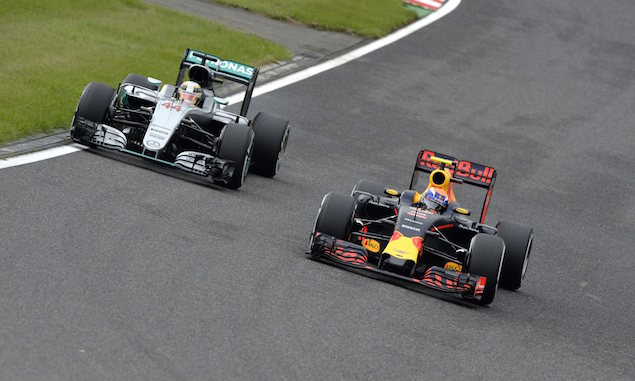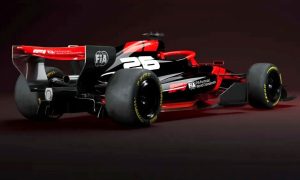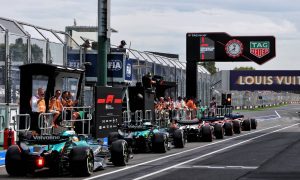
The FIA says it will clamp down on moving under braking following Max Verstappen's defensive driving in the Japanese Grand Prix.
Mercedes protested the race result at Suzuka after Lewis Hamilton had to take evasive action after Verstappen moved late to defend the inside line under braking for the chicane at the end of the penultimate lap of the race. With both drivers having left the circuit, Mercedes dropped its protest when the stewards said a hearing would take place at the United States Grand Prix instead.
However, an hour-long driver briefing on Friday evening in Austin saw the topic raised again, with the vague wording of the regulations not specifically prohibiting a driver from moving under braking. Following the discussion, FIA race director Charlie Whiting updated the event notes to show he will not allow changes of direction under braking in future.
"Article 27.5 of the Sporting Regulations states that '...no car may be driven...in a manner which could be potentially dangerous to other drivers...', furthermore, Article 27.8 prohibits any manoeuvre '...liable to hinder other drivers, such as...any abnormal change of direction'," the revised race notes read.
"With this in mind, and with the exception of any move permitted by Article 27.6, any change of direction under braking which results in another driver having to take evasive action will be considered abnormal and hence potentially dangerous to other drivers. Any such move will be reported to the stewards."
Japan also saw blue flags become a hot topic as the leaders struggled when lapping cars at Suzuka, and Whiting has also revised the way drivers will be informed when they are set to be lapped.
"Article 27.9 of the Sporting Regulations requires drivers who are caught by another car about to lap him to allow the faster driver past at the first available opportunity," Whitings notes read. "The F1 Marshalling System has been developed in order to ensure that the point at which a driver is shown blue flags is consistent, rather than trusting the ability of marshals to identify situations that require blue flags. Whilst this has been largely successful the way in which teams and drivers use the system seems to have become inconsistent.
"From now onwards the system will be set to give a pre-warning when the faster car is within 3.0s of the car about to be lapped, this should be used by the team of the slower car to warn their driver he is soon going to be lapped and that allowing the faster car through should be considered a priority. When the faster car is within 1.0s of the car about to be lapped blue flags will be shown to the slower car (in addition to blue cockpit lights and a message on the timing monitors) and the driver must allow the following driver to overtake at the first available opportunity.
"It should be noted that the aim of using F1MS is ensure consistent application of the rules, additional instructions may also be given by race control when necessary."
Silbermann says ... Taylor should take over F1
Romain Grosjean column: 100 races, now for the wins
PREVIEW: 2016 United States Grand Prix
TECHNICAL - Turbulent Jet Ignition: In the antechamber of F1 power
Keep up to date with all the F1 news via Facebook and Twitter






